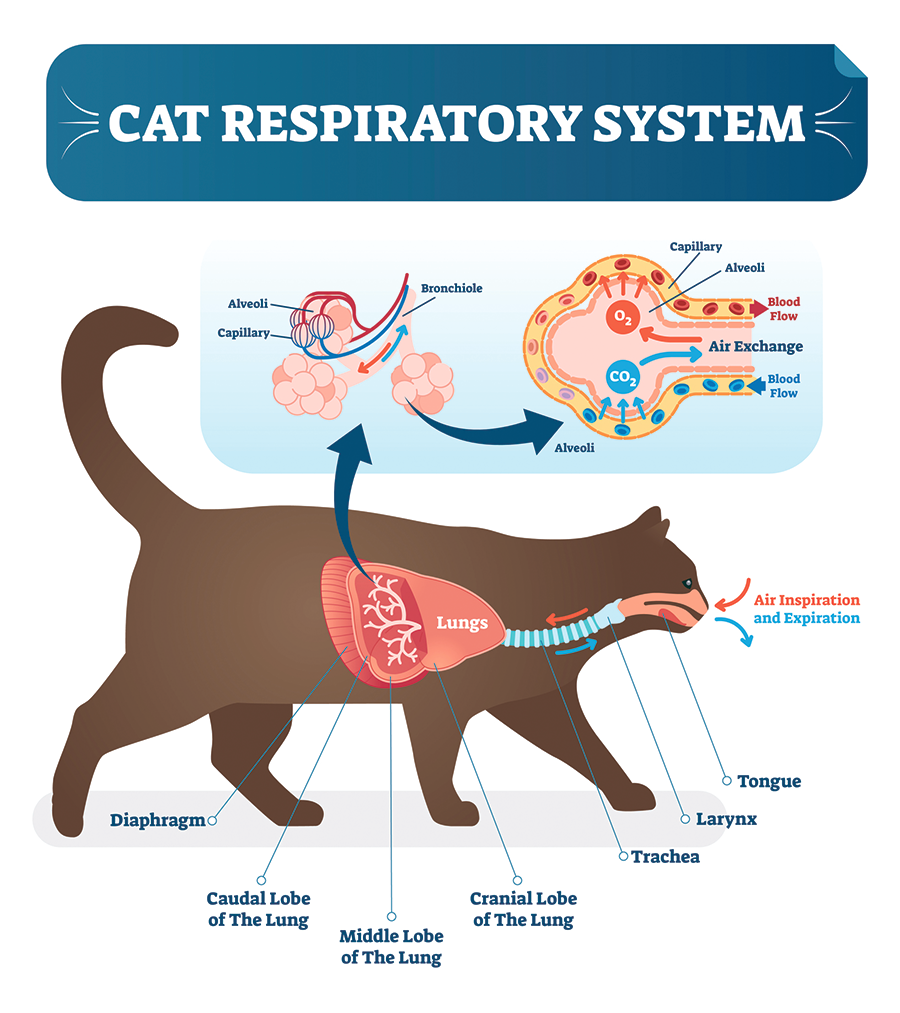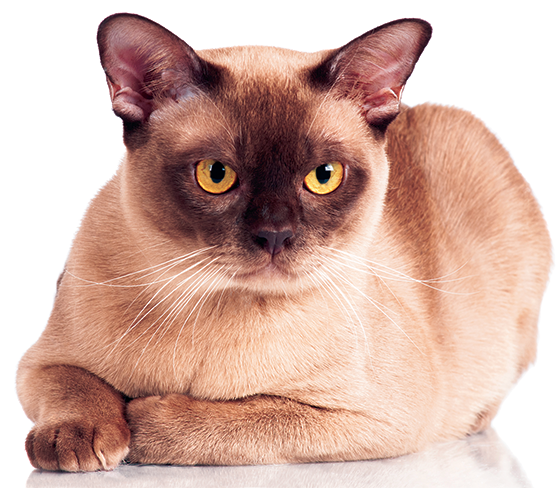A subtle change in the sound of your cat’s meow may indicate she has a problem with her larynx (voice box), which is composed of right and left paired cartilages that connect the oral cavity to the trachea. The air your cat breathes in goes through the larynx to the lungs, and cats with problems in the larynx may have varying degrees of difficulty breathing.
If you watch a cat with possible laryngeal problems closely, you may notice difficulty breathing, a wheeze or stridor, or gagging when eating or drinking. Weight loss may be apparent. Although these symptoms are nonspecific, they are cause for a prompt consultation with a veterinarian.
Laryngeal problems can run from mild to severe, and can be caused by a number of conditions. Common causes include inhaled irritants like dust or secondhand smoke or a respiratory infection such as herpes virus or calicivirus. Affected cats may also have congenital deformities that cause laryngeal problems, and immune and endocrine (hormonal) disorders may also affect the larynx. There is some suspicion, for example, that hypothyroidism may be a cause, but this is debatable. Myopathy (muscle disease) or nervous system problems can also trigger laryngeal problems.
Diagnosis
Your veterinarian will perform a thorough physical exam and may recommend diagnostic tests. Chest radiographs are often the first step, looking for signs of pulmonary or cardiac illness that may affect breathing. A full neurologic exam may be done to rule out neuromuscular weakness, and blood tests may be run to rule out infection and thyroid problems. Depending upon severity and physical examination findings, careful examination of the larynx (usually requiring sedation and/or anesthesia) may be recommended.
Typical diagnoses include:
Laryngitis. Cats with laryngitis often start with a harsh, dry cough that may progress to a soft, moist cough. Laryngitis can be painful, particularly when swallowing and/or breathing. You may notice your cat breathing with her head down and mouth open. The sound of her meow may be different. Treatment often includes anti-inflammatory medications, pain medications, antibiotics if indicated, and softened foods. Providing food and water at room temperature or slightly warmer may help your cat eat and drink normally. Laryngitis may be due to infectious rhinotracheitis or calicivirus infection, and most cats make a full recovery in cases that are not severe.
Cancer. Lymphoma is the most common laryngeal neoplasia. Radiographs of the neck and oral area may be obtained to detect laryngeal masses. If found, these are usually biopsied to check for cancer. Chemotherapy can provide prolonged periods of high quality life for cats with lymphoma (depending upon how advanced the disease is), but it is not generally curative, and the long term prognosis may not be favorable.
Laryngeal paralysis. Although rare, laryngeal paralysis is most frequently found in older cats. It may be due to a neuromuscular abnormality or to trauma.
Cats with laryngeal paralysis often show an increase in panting and a reduced tolerance for hot weather. Abnormal respiratory sounds and other symptoms of distress may be evident, and they may vomit and/or regurgitate. These nonspecific symptoms indicate that a veterinary exam is warranted.
Cats with unilateral laryngeal paralysis typically have less significant clinical signs and can often be managed medically. However, most cases in cats are bilateral. Cats with bilateral laryngeal paralysis often benefit from surgery.
The surgery recommended for most cases is the unilateral arytenoid lateralization or “tieback.” This surgery uses a suture to permanently keep one side of the larynx open. Doing only one side minimizes the chances of aspiration pneumonia (the larynx normally closes fully to prevent food from getting down in to the lungs, where it may predispose to bacterial infection/pneumonia) while providing your cat with plenty of airflow.

All the air your cat breathes passes through the larynx.
Bottom Line
If your cat develops symptoms of a larynx problem, a veterinary consultation is important. While the potential causes of these symptoms are not common, they can be serious.
Purring Kitty
Purring is a unique feline sound produced by an interaction between two sets of muscles, the laryngeal muscles and the diaphragm. As your cat breathes in, air hitting the vibrating laryngeal muscles produces a purring sound. Domestic cats, bobcats, cheetahs, Eurasian lynx, and mountain lions can all purr.




